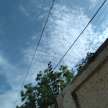How the 'lost cities' of amazon were finally found
Unlocking Mysteries: The Fascinating Journey to Rediscover the 'Lost Cities' of the Amazon

Meet Percy Fawcett, the intrepid British explorer whose journey into the heart of the Amazon rainforest in 1925 marked the last known communication from him. This was his eighth expedition into the Amazon, driven by a singular objective: the pursuit of a fabled lost city, dubbed "Z". This quest was fueled by age-old rumors that whispered of sprawling cities nestled deep within the dense rainforest, a notion that captured Fawcett's imagination. Yet, despite his unwavering determination, Fawcett's search for "Z" and other mythical cities remained unfruitful, leaving many to believe that the Amazon's untamed wilds were incompatible with the existence of urban centers.
Recently, however, groundbreaking discoveries have altered our perception of the Amazon's past. Inconspicuous ditches and mounds, scattered across the rainforest, have piqued the interest of archaeologists. These seemingly natural formations have been unmasked as evidence of human engineering. These revelations spark a renewed understanding of an ancient enigma: the whereabouts of the long-lost cities of the Amazon.
Travel back to the 16th century, a time when European colonizers surged into the territories of Central and South America, accompanied by soldiers, diseases, and visions of conquest. As they encountered diverse indigenous groups, they stumbled upon remarkable cities, like Tenochtitlan, founded by the Mexica people around 1325 AD, and Cusco, established by the Incas around 1200 AD. These urban centers boasted intricate stone structures, well-planned streets, and bustling neighborhoods. However, the European dominion over these cities masked their potential to hold yet another marvel.
The colonizers, amidst tales of "A great Lord... covered in gold dust" and the allure of the legendary El Dorado, failed in their quests to find the fabled city of gold. While their expeditions resulted in hardship and disillusionment, they bore witness to signs that hinted at the existence of thriving civilizations. Accounts from Spanish explorers spoke of gleaming cities, abundant crops, and significant towns that seemed to defy the rainforest's perceived hostility. Over two centuries, these explorations took place, yet the legend of El Dorado was eventually relegated to the realm of myth by the 19th century.
Fast forward to the early 20th century, when Percy Fawcett rekindled the search for these elusive cities. His relentless efforts spanned decades, targeting two Amazonian regions: the western reaches of Bolivia and the southern expanses of Brazil. Fawcett encountered indigenous communities, described as living in modest groups within simple villages. The absence of stone ruins seemed to bolster the consensus among experts that the rainforest was inherently unsuited for supporting intricate societies, let alone cities.
Experts of the time leaned toward the belief that the indigenous people lacked the sophistication to construct cities, attributing their livelihoods to the rainforest's limited fertility. In the face of skepticism, Fawcett clung to his conviction, penning a final letter to his wife assuring her, "You need have no fear of any failure." His departure from camp marked his vanishing, plunging him into the realm of mystery.
Decades passed, and the Amazon continued to be seen as a realm of emptiness. Yet, Fawcett had been on the right trail, albeit chasing the wrong quarry. The crucial clue that had eluded him lay within the soil itself. In the 1960s, scientists stumbled upon pockets of extraordinarily fertile earth, named terra preta or black earth. This rich soil, enriched by human waste or controlled forest fires, hinted at the possibility of large-scale agriculture within the rainforest. The 1990s then brought another revelation, as archaeologists studying the Xingu river region discovered intricate ditches, remnants of carefully designed settlements. These ditches marked out walls, a central plaza, and interconnected roads, revealing a network of settlements that could have harbored up to 50,000 people between 1250 and 1650 AD.
These settlements followed a sustainable blueprint, making the most of the rainforest's resources without exhausting them. Orchards and gardens were carefully demarcated, while the forested areas remained sanctuaries for animals and medicinal plants. These, it seems, were the hidden cities that had captivated Fawcett's imagination. As time passed, evidence of these lost cities burgeoned, revealing a complex tapestry of settlements across the Amazon. Trench networks that date back to 200 - 1200 AD suggested a population of up to 60,000 people, rivalling many European cities of the era. Satellite technology even uncovered U-shaped structures atop 22-meter pyramids in Bolivia, fueling the consensus that these Amazonian cities once played host to millions.
Fawcett's failure to encounter these lost cities can be attributed to a multitude of factors. The devastating impact of diseases brought by European colonizers had already decimated an estimated 80-95% of the indigenous population, particularly from smallpox and measles. Furthermore, the construction materials used by Amazonian indigenous people, primarily wood and earth, led to the gradual decay of their architectural achievements, leaving little behind but dense vegetation and seemingly untouched soil.
The revelation of these lost cities shatters our preconceptions and unveils an ancient harmony between humans and the rainforest. The intricate relationships between settlements, their inhabitants, and the bounties of nature paint a picture of a civilization that once thrived amidst the dense foliage. These discoveries propel us toward a deeper comprehension of the intricate dance that humans and the rainforest shared, an enduring partnership that is only beginning to unravel before our eyes.
Like what you read? Consider liking and subscribing for more! :)






Comments
There are no comments for this story
Be the first to respond and start the conversation.